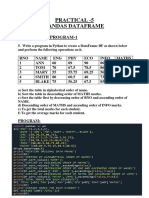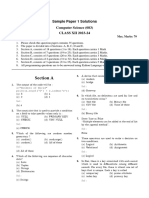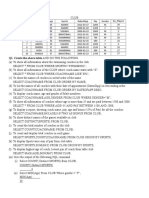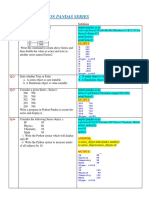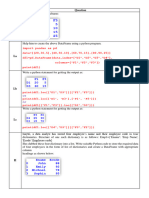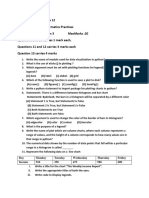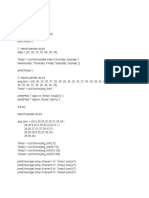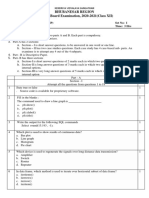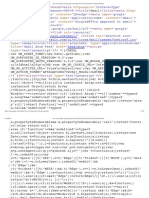0% found this document useful (0 votes)
2K views13 pagesPandas Questions Ip File
The document contains 15 questions related to Pandas and Matplotlib in Python. The questions cover topics like creating and manipulating Pandas Series and DataFrames, selecting data, sorting values, converting between data types, plotting charts and more. Sample code and outputs are provided for each question.
Uploaded by
AISHI SHARMACopyright
© © All Rights Reserved
We take content rights seriously. If you suspect this is your content, claim it here.
Available Formats
Download as DOCX, PDF, TXT or read online on Scribd
0% found this document useful (0 votes)
2K views13 pagesPandas Questions Ip File
The document contains 15 questions related to Pandas and Matplotlib in Python. The questions cover topics like creating and manipulating Pandas Series and DataFrames, selecting data, sorting values, converting between data types, plotting charts and more. Sample code and outputs are provided for each question.
Uploaded by
AISHI SHARMACopyright
© © All Rights Reserved
We take content rights seriously. If you suspect this is your content, claim it here.
Available Formats
Download as DOCX, PDF, TXT or read online on Scribd
/ 13









